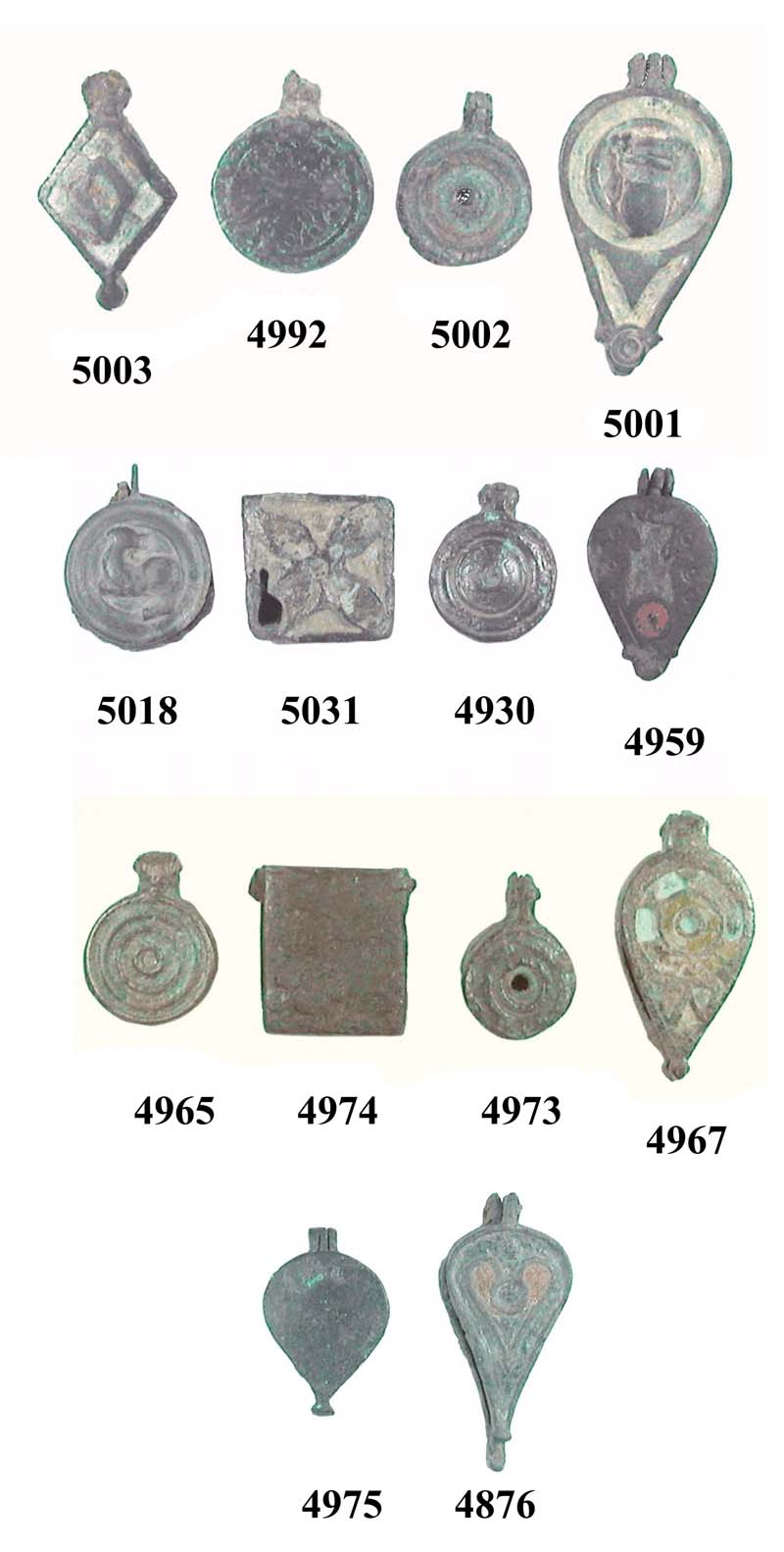

The Romans used many locks for many purposes, as we do. There were door locks, chest locks and padlocks in great variety, but there were situations in which it was awkward to use any of these. Bags of newly minted coins were shipped to and from the provinces. Shipments of goods in fabric or leather containers needed some sort of protection. And then there were letters. Then as now, government officials, politicians, merchants and especially military commanders needed to send messages, sometimes very urgently. This was done by the ancient version of the pony express: relays of couriers traveling the famous Roman road system.
There was, however, a security problem: no one but the recipient could be allowed to read sensitive information. Messages were usually written with a stylus on wood tablets, surface-coated with. wax (Curle). But how do you make sure that no one reads them but the recipients? How do you know that a bag hasnít been opened and a few goodies stolen?
One solution to these problems was the seal box. This was a little bronze box, generally an inch or so in size, with holes in the side and bottom. For fabric and leather containers, it was attached by sewing through the holes in the bottom. Message tablets were probably bagged. Containers were bound with cord passing through the holes in each side and tied with a knot inside the box. The box was then filled with wax, impressed with the senderís seal and closed. Of course containers could still be opened and the contents read or stolen, but there would be severe consequences!
It seems very strange from our point of view, that of a mechanical civilization with billions of such little objects, but seal boxes were rare and important items. They were lost wax castings made (by slaves and freedmen, presumably) with considerable labor and expense. They were often elaborately decorated and some were even finished with colored enamel, some examples of which are shown here. Figural designs were most impressive, but of course more expensive. The embossed phallus was popular, as were animal figurals. Details of their manufacture and distribution are as yet a complete mystery!
The seal box seems to have been a peculiarly Roman invention and as an artifact of their civilization, did not survive them. It would be interesting to determine when their use ended. It would probably be prior to the fourth century, since there was no known (to me) transfer to the Byzantine society. The function seems to have been taken over by the wax seal and signet ring, whose use has persisted until recent times.
Box 5002 This is the most commonly found seal box. Often associated with the military, it has a simple design of cast-in concentric circles.



Box 5031 In most boxes, the lid, guided by the hinge, simply met the top of the base, and there was a tab-in-hole latching provision at the bottom. In the square boxes shown here, the lid actually fitted down over the base to make a true box. In 5031a we see a piece of the original sewing cord stuck to the inside of the base. It's unclear how this could have happened, but perhaps it was preserved by wax. In 5031b is shown a view of the bottom of the base, and the holes filled by the cord and corrosion products.
Box 5057 This is an especially well preserved example, with functioning bronze hinge and bottom tip detent. White and green enamel on the lid.
Box 5059 Perhaps the most coveted seal boxes are those with embossed lids. They may be fish, birds, animals, even persons. This one is a bird lid.
Box 5091 Embossed figure of a ram (?). The hinge has mostly eroded away, but the box remains corroded shut
Box 5092 Embossed with a cockerel.
Box 5112 Bronze box with iron hinge, lid divided into quadrants with a figure in each. Possibly a script, but nothing I recognize.
Box 5115 Nice three dimensional style, somewhat like a ship's helm. But isn't, of course. This one is still full of its original dirt.
Box 5120 Embossed lid with a head of what is alleged to be a wolf. Actually, it looks more like a fox to me. Anyway, a spectacular figural.
The Signet Ring
The signet ring was also a security device, and worn by most upper class Romans. It was his signature, and the best guarantee that a message from him was authentic. It is included here because it was intimately connected with the seal box, as well as documents.
Ring 349 I do not collect signet rings, and present only a single example, with a lion figure that would do credit to an abstract expressionist some 1800 years later!